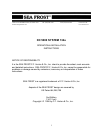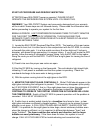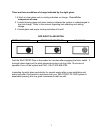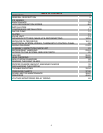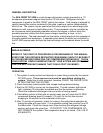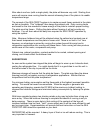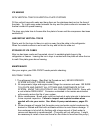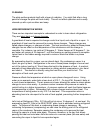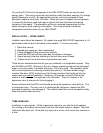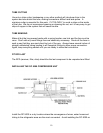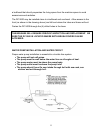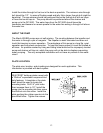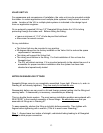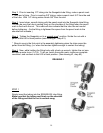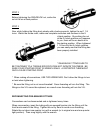
8
CLEANING
The plate surface protects itself with a layer of oxidation. You might find after a long
period of storage the plate will look chalky. This will not effect operation and is easily
cleaned up with a pot scrubber and soap.
HOW REFRIGERATION WORKS
There are two important concepts to understand in order to learn about refrigeration.
They are latent heat and phase changes.
A great deal of heat is required to change a solid to a liquid, and a liquid to a vapor. A
great deal of heat must be removed to reverse these changes. These changes are
called phase changes, or changes of state. The heat removed or added at these phase
changes has no effect on the temperature of the substances until the change is
complete. For instance, ice melts at 32 degrees F. Water freezes at 32 degrees F. Ice
and water will remain at 32 degrees F. until the freezing or melting process is complete.
Latent heat is this hidden energy required to make or break the bonds in a phase
change.
By evaporating liquid to a vapor, we can absorb heat. By condensing a vapor to a
liquid, we give up heat. Refrigeration is the use of these phase changes to move heat
out of the icebox (cooling it). We all know that cold is the absence of heat. A practical
example of heat absorption by evaporation is rubbing alcohol evaporates in your hand
and cools it. The alcohol is actually using the heat from your hand to boil. The
absorption of heat cools your hand.
Pressure affects the temperature at which a vapor phase change will occur. Using
water as an example, water boils at sea level at 212.F. On top of Mt. Everest it boils at
a much lower temperature. The air pressure is lower allowing the water-to-steam phase
change to occur more easily. A pressure cooker increases the pressure on water to
restrict boiling to a higher temperature. A pressure cooker will cook food faster because
the temperature is higher. Remember that a phase change involves latent heat. The
temperature of boiling water is only 212.F at sea level. The evaporation action is
absorbing heat at a rate equal to the rate of heat applied, preventing further temperature
rise.
Let's look at Refrigerant-134a. R-134a will boil at minus 15 degrees F. at sea level. By
evaporating liquid R-134a in the SEA FROST plate, heat is absorbed making refrigerant
vapor. To dispose of this heat, a condensing phase change is necessary. By
increasing the pressure (compressing) we can raise the boiling point of the refrigerant
vapor at the condenser. Seawater passing the condenser coils removes the heat,
forcing the vapor to a liquid state again. Pressure, therefore, is the key that allows
passing the heat we have taken from the icebox to a warmer place (the sea water) and
converting the vapor to liquid to be evaporated again.



